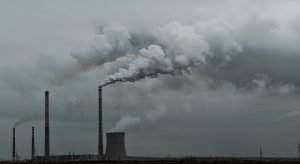The “Silent Killer” of Toxic Gas and How You Can Avoid It
Can you believe that an estimated 20,000 people receive treatment annually due to gas poisoning? That’s a staggering figure. And, nearly 500 deaths per year are caused by that same toxic gas alone.
The National Fire Protection Association (NFPA) reports approximately 61,000 gas-related incidents yearly. But what gas could have such a harmful effect on so many lives?
Carbon monoxide (CO)— It’s a toxic, almost undetectable gas that is a common home and industrial hazard. With no odor, smell, or taste, this gas has been given the nickname the “Silent Killer.”
Typically, mild carbon monoxide poisoning can cause symptoms such as nausea, dizziness, tiredness, or headaches. However, more severe cases of CO poisoning can lead to brain or heart damage, and even death if not caught soon enough.
Where Does Toxic Gas Come From?
You’ve seen it in your favorite movies, and you’ve heard it on those early morning infomercials, but let’s make one thing clear… Carbon monoxide comes from the partial burning of fuels.
Common products such as gasoline, propane, oil, natural gas, wood, and coal all produce CO when burned. This is exclusive to all the fossil fuels and organic materials used as fuels.
Common gas-operated appliances and equipment could cause a disastrous incident in your home or business if its CO production reaches dangerous levels indoors. Any improperly installed, poorly maintained, poorly ventilated, or malfunctioning appliance or equipment can quickly become a threat to you, your family, or staff.
But carbon monoxide poisoning IS preventable. Below, we’ve put together a list of tips to follow to keep your home or facility safe for everyone.
8 Helpful Tips to Detect and Prevent Carbon Monoxide Poisoning
-
Install the Proper Alarms
It’s necessary that any closed space that has a gas-operated appliance or shares a wall with one, has a carbon monoxide detector.
This is for two important reasons: reducing health-related injuries, and state regulation purposes. Maintain a safe and secure environment and follow your state laws. To find out more, contact your local authorities and ask about your state’s regulations.
-
Don’t Overlook Alarm Maintenance
Just like a car, alarms only live but for so long.
Neglect them and they’ll neglect you.
Make sure you test your alarm at least once a month to ensure it’s properly working and ready to detect a threat. And again, like your car, you will have to replace it eventually. Generally, that’s about every six years…but read the instructions to know exactly when to update your household or facility with safer detection equipment.
-
Maintain Your Appliances to Maintain Your Health
Everyone makes this mistake, so we are going to make sure you don’t.
Keep your appliances and equipment up-to-date and in working order. Adjust flames, burners, and drafts to reduce carbon monoxide production. Just because you buy it new and it’s working properly doesn’t mean it will stay that way forever.
Be mindful that appliances malfunction all the time, and can become life-threatening if not managed accordingly.
-
Keep Lifesaving Emergency Equipment on Hand
Manufacturing facilities that work with flammable gases and materials must have emergency equipment.
In this case, respirators. In the event of a gas leak, there should be access to emergency respirators around the facility.
Just like your alarm, make sure that your equipment is functional and up-to-date to ensure it’s ready to be used in case of emergency. And as always, restock supplies when needed to be prepared for any accident.
-
Check Your Air Quality
Even small amounts of carbon monoxide can pose a threat.
You might think you are nauseous because of that sushi you ate. You might even think you are dizzy because you missed a meal. But it could be something worse.
To make sure you’re not being exposed to this toxic gas, test the air quality in spaces where carbon monoxide could be produced.
-
Pool Heaters: Asset or Liability?
That’s right, even your pool heater could pose as a threat.
It can either be an asset or a liability. Carbon monoxide is produced when the heater is functioning, and needs to be ventilated the right way. Make sure that your pool’s heater:
- is installed correctly
- has proper ventilation equipment
- is ventilated the right way.
If your pool is indoors, make sure it’s ventilated properly—and that it is not too close to any windows. This is to avoid carbon monoxide drafting into your building and harming anyone inside. Continue to maintain the heating and venting system to prevent any malfunctions.
-
Vents Are Like Veins
Think of it like this:
Your body maintains your veins, and they serve an important role in your overall health. The concept is same for vents, except for your home or manufacturing facility.
It maintains good air quality in the building and keeps the people inside healthy and safe.
In this case, you need to maintain clear ventilation systems and regularly inspect your vents for any damage. Otherwise, your building’s air quality will drop and become a toxic environment.
-
Train Your Employees
This is one of the most obvious but overlooked steps that causes a lot of trouble…
Train your employees—and yourself—on how to operate and maintain all equipment. This goes for any emergency equipment, alarms, detectors, meters, or ventilation systems.
Your environment will only be as safe as you and your employees understand it can be. From installation to maintenance, it is essential to take multiple steps provide a safe and secure environment. And then, schedule routine checks to make sure everything implemented is in working order.
It is your responsibility to make sure your home, building, or manufacturing facility is safe for you, your family, or your staff.
Need more information to make sure your space is safe from carbon monoxide? No worries.
Please check out the resources below for more helpful tips, or send us a message!






